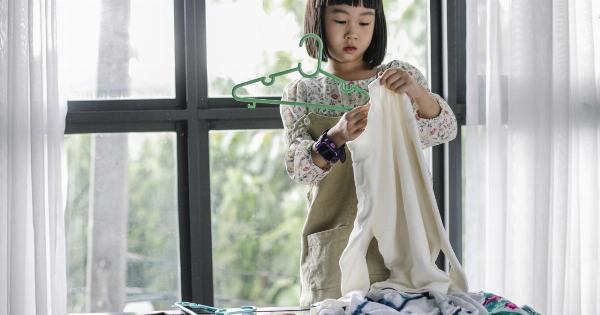Cleaners and disinfectants are essential products in our daily life. We use them for maintaining hygiene and keeping our surroundings free from germs and infectious bacteria.
However, the chemicals in these cleaning products can pose severe health hazards, especially for children who are more susceptible to harmful chemicals. In this article, we will discuss the harmful effects of cleaners on children’s health and ways to reduce their exposure to toxic chemicals.
1. Respiratory Problems
The most common harmful effect of cleaners on children’s health is respiratory problems. Many cleaning products contain volatile organic compounds (VOCs), which can release toxic fumes that cause irritation in the respiratory system.
Common symptoms include coughing, sneezing, wheezing, shortness of breath, and asthma. In severe cases, it can lead to chronic respiratory problems, such as bronchitis and emphysema.
2. Skin Irritation
Children’s skin is sensitive, and exposure to cleaning products can cause skin irritation, allergic reactions, and contact dermatitis.
Cleaning products containing harsh chemicals such as sodium hydroxide, ammonia, and bleach can cause chemical burns on the skin, leading to blisters and swelling.
3. Eye Irritation
Exposure to cleaning products can cause eye irritation, redness, and tearing. Chemicals like bleach, ammonia, and hydrogen peroxide are particularly harmful to the eyes, and care should be taken when using these products in homes with children.
In severe cases, exposure to these chemicals can lead to vision problems and even blindness.
4. Poisoning
Cleaning products are often kept under the kitchen sink or in a cabinet, and children can easily ingest them, leading to poisoning. Accidental poisoning can cause serious health hazards, including internal burns, respiratory problems, and even death.
5. Neurological Problems
Some cleaning products contain neurotoxic agents that can affect the nervous system and brain function. Exposure to these agents can cause headaches, nausea, dizziness, and disorientation. In severe cases, it can lead to seizures, coma, and even death.
6. Hormonal Disruption
Certain cleaning products like air fresheners, laundry detergents, and soaps can disrupt the endocrine system, which regulates hormones in the body.
Exposure to these products can cause hormonal imbalances, leading to developmental problems in children, such as delayed puberty, behavioral problems, and reproductive issues.
7. Environmental Pollution
Cleaning products have a significant impact on the environment, and the chemicals used in these products can pollute the air, water, and soil.
Many cleaning products contain phosphates, which can cause algae growth in water bodies, leading to eutrophication. Moreover, the toxic chemicals used in cleaning products can also contribute to air pollution and greenhouse gas emissions.
Ways to Reduce Exposure to Harmful Chemicals
Now that we’re aware of the harmful effects of cleaning products on children’s health, let’s explore ways to reduce their exposure to toxic chemicals.
Choose Safer Cleaning Alternatives
Instead of using harsh cleaning products, opt for safer cleaning alternatives. You can make natural cleaning solutions using ingredients like vinegar, baking soda, and lemon juice. These ingredients are non-toxic and do not harm the environment.
Many commercial cleaning products have also started using natural ingredients in their formulations.
Read Labels Carefully
Before using any cleaning product, read the label carefully. Look for products that are free of harmful chemicals and avoid those that have warnings for hazardous ingredients.
Check for certifications like Green Seal, Ecocert, and Ecolabel, which indicate that the product has met certain environmental and health standards.
Store Cleaning Products Safely
Store all cleaning products out of reach of children and preferably in a locked cabinet. Never leave cleaning products unattended on countertops or floors, as children are curious and may accidentally ingest them.
Ventilate Properly
When using cleaning products, make sure you have proper ventilation in the room. Open windows and use fans to circulate fresh air. Avoid using cleaning products in enclosed spaces like bathrooms and small rooms.
Conclusion
Children are vulnerable to the harmful effects of cleaners, and it is essential to take proper precautions when using cleaning products around them.
By choosing safer alternatives, reading labels carefully, storing cleaning products safely, and properly ventilating, we can reduce children’s exposure to toxic chemicals and create a safer environment for them.


























